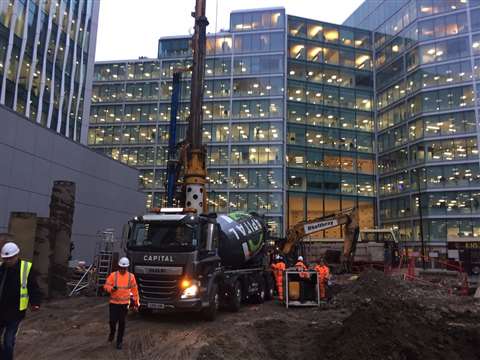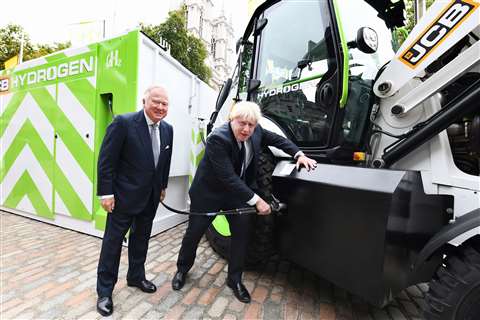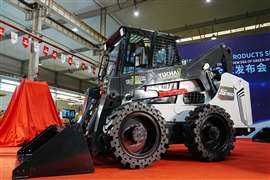Construction sector leads charge to Net Zero
17 November 2021
While the COP26 climate summit in Glasgow has not miraculously solved the climate crisis there has been a degree of success with a result on carbon - although one could argue that the agreement has seen the ground rules scaled-down for carbon markets under the Paris Agreement’s Article 6.
The climate talks ended with an agreement on Saturday, after 15 days of negotiations.

Although, a late disagreement over the phrasing on fossil fuels saw pledges on coal somewhat diluted.
Boris Johnson said that COP26 “sounded the death knell for coal power”, but his joy at any progress made at the Glasgow summit was “tinged with disappointment”.
Mr Johnson also later admitted that “Glasgow won’t stop climate change” but maintained the COP26 climate conference can “help us to slow that warming down”.
However, it still remains the first time that plans to reduce coal have been mentioned in such a climate deal – so a big step in the right direction.
And while world leaders held key negotions in the Blue Zone at COP26, it was the activities of those in the event’s Green Zone that offered tangible solutions for how the construction sector can reduce its impact on the environment.
Indeed, all the innovation and the drive to net zero by 2050 is coming from business and of particular note - the construction and construction products and equipment sectors.
COP26: Construction sector highlights
 Earth Friendly Concrete has already been utilised at the HS2 project.
Earth Friendly Concrete has already been utilised at the HS2 project.
Low carbon materials
Announced at the COP26 event, was that specialist engineering and construction company Keltbray is testing a new type of earth friendly concrete which uses industrial waste byproducts instead of traditional cement, which according to Keltbray, reduces carbon content by an impressive 80%.
Kiro Tamer, Head of Environmental Sustainability at Keltbray, said, “We are carrying out multiple tests on several of our projects and then conducting destructive testing and then collecting that data. Research and development is really is important to quantify that these alternative materials to create concrete that provides the longevity our projects require.”
Innovative new materials are just one of the ways the industry is changing to become more sustainable.
Energy efficient buildings
The Active Building Centre in Gloucester was created as part of the transforming construction challenge to show how the buildings of the future can be made more energy and labour efficient.
Sam Stacey, Challenge Director, Innovate UK Transforming Construction Challenge, said, “We know that we can take about two thirds of the labour out of producing new buildings, we know that we can create building that use about two-thirds less energy and we can reduce amount of materials used in buildings by 30% - these gains are enormous and that’s exactly what’s happening in Flintshire where the active building centre is supporting the local council to build 20 new homes for rent which are designed to be net carbon zero.”
Similarly, Dr Jo Atkinson, Buildings Project Manager, Active Building Centre, said, “By engaging us so early we have been able to demonstrate that you can achieve net zero before we’ve committed to planning.”
“So when they get their planning the permission it will be on the basis that they are building net zero carbon homes.”
The Green Zone hosted a number of companies who were demonstrating what they were doing to support the construction sector.
Electric construction equipment
Principal COP26 sponsors, Hitachi demonstrated how electrification and driverless EV vehicles can help smart cities.
Hitachi Construction Machinery UK (HCMUK), also worked in partnership with tier one contractor Balfour Beatty who were showcasing a number of innovative ways in which the contractor is able to reduce its carbon footprint at its Sustainable Evolution Showcase event, with Hitachi Construction Machinery UK and sister company Synergy Hire.
On display was a a highly spec’ed Hitachi ZX135US-7, which will help the construction company move towards their goal of a zero-carbon construction site.
In addition to the latest Stage V engine and latest TRIAS III pump technology, it was also equipped with semi-automated Leica Geosystems machine control, Xwatch height and slew limiter, Hitachi’s real-time CT fleet link telematics system, and fuelled with Hydrotreated Vegetable Oil (HVO) fuel.
 JCB recently signed a billion-euro deal to buy green hydrogen from Australian energy company Fortescue Future Industries (FFI). Prime Minister Boris Johnson (right) and JCB chairman Lord Bamford were present for the company’s announcement.
JCB recently signed a billion-euro deal to buy green hydrogen from Australian energy company Fortescue Future Industries (FFI). Prime Minister Boris Johnson (right) and JCB chairman Lord Bamford were present for the company’s announcement.
JCB took visitors on a journey in the development of hydrogen-powered mobile construction vehicles.
Bob Womersley, Director of Product Innovation at JCB, explained how alternative fuels, such as hydrogen, can be used to power mobile plant and compete with traditional diesel-powered machines, both now and in our transition to a NetZero future.
He said, “In our journey from a carbon-based economy, hydrogen will have a place in making our immediate transition to NetZero and is likely to have a longer-term future.”
In a showcase version of ‘Building A Greener Britain’, hosted by the Construction Leadership Council and ITN, it was confirmed that the Construction Sector accounts for almost 40% of carbon emissions and that is the challenge – to radically improve the sustainability of the built environment.
The transition to zero carbon construction
CO2nstructZero is the construction industry’s zero carbon change programme - the ambition delivering carbon neutrality by 2050.
 Brian Berry, chief executive of the Federation of Master Builders
Brian Berry, chief executive of the Federation of Master Builders
Brian Berry, CEO of the Federation of Master Builders (FMB) spoke on ‘Building A Greener Britain’ on the day dedicated to ‘The Built Environment’ at COP26.
He said, “We are looking at the challenges and the opportunities and we’re looking through the lenses of transport, construction activity and buildings so we need to look at new technology and we need to be actually addressing modern methods of construction as a means to reduce transport and waste on site.
“We need to understand the energy performance of commercial and residential buildings, and the third part is about construction activity.
“We need to actually look at the carbon usage of construction projects with the aim of actually driving out as much carbon as we can in our construction projects.”






